Several Indian festivals have a strong association with trees and flowers.
For instance, Vishu, one of the main festivals of the State of Kerala is celebrated with flowers of the Laburnum tree. The yellow blossoms symbolize gold and prosperity.

In Maharashtra, leaves of the Apta or the Bauhinia are offered to friends and family during Dushera, as a symbol of prosperity and gold.
The festival of Holi, celebrated during spring across India also has a strong association with certain flowers from which colours were extracted, before chemical colours became the norm.
Let’s hear it then for one of the trees from which Gulal – the popular colour used in Holi was extracted.
The Source of Gulal
Gulal (the red colour used to play Holi) comes from the flowers of one of my favourite trees – the Palash.
You’ve probably heard of this tree too – it is popularly known as The Flame of the Forest.
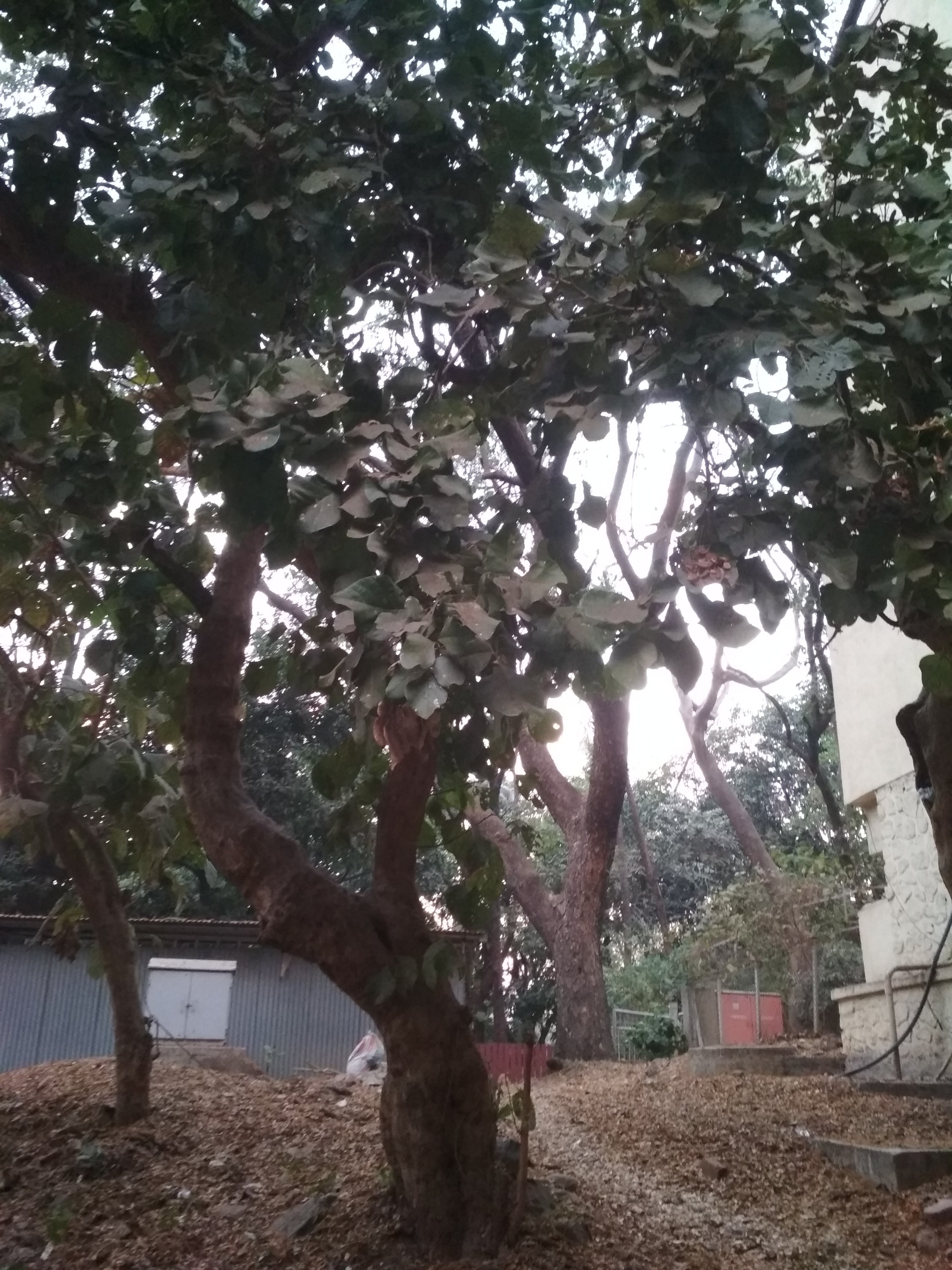
It’s bright red flowers when blooming look like the tree is on fire. Hence the name.
And you can only imagine how it must look when a forest full of Palash trees is blooming. The sight captivated writers and poets – who have described various scenes from the blood soaked battle ground of Kurukshetra in the Mahabharata to describing a traditional bride with metaphors drawn from the Palash tree.

Does the name Palash ring a bell?
Most of us have studied about the Battle of Plassey in history lessons back in school. It is the decisive battle that took place in 1757 in which the British gain control of Bengal.
Not many however know that the term Plassey comes from the name of the place – Palashi, a little village in West Bengal, named so because of an abundance of Palash trees found there.
The English, as usual, twisted the name Palashi to Plassey.
So that decisive battle of Plassey which you learnt about at school is actually the battle of Palashi.
Colours of the Palash.
A Palash in full bloom is a burst of Scarlet red.
The flowers of the Palash are the source of the traditional yellow – orange dye that was used during the festival of Holi. The dye obtained from this flower was called Gulal.
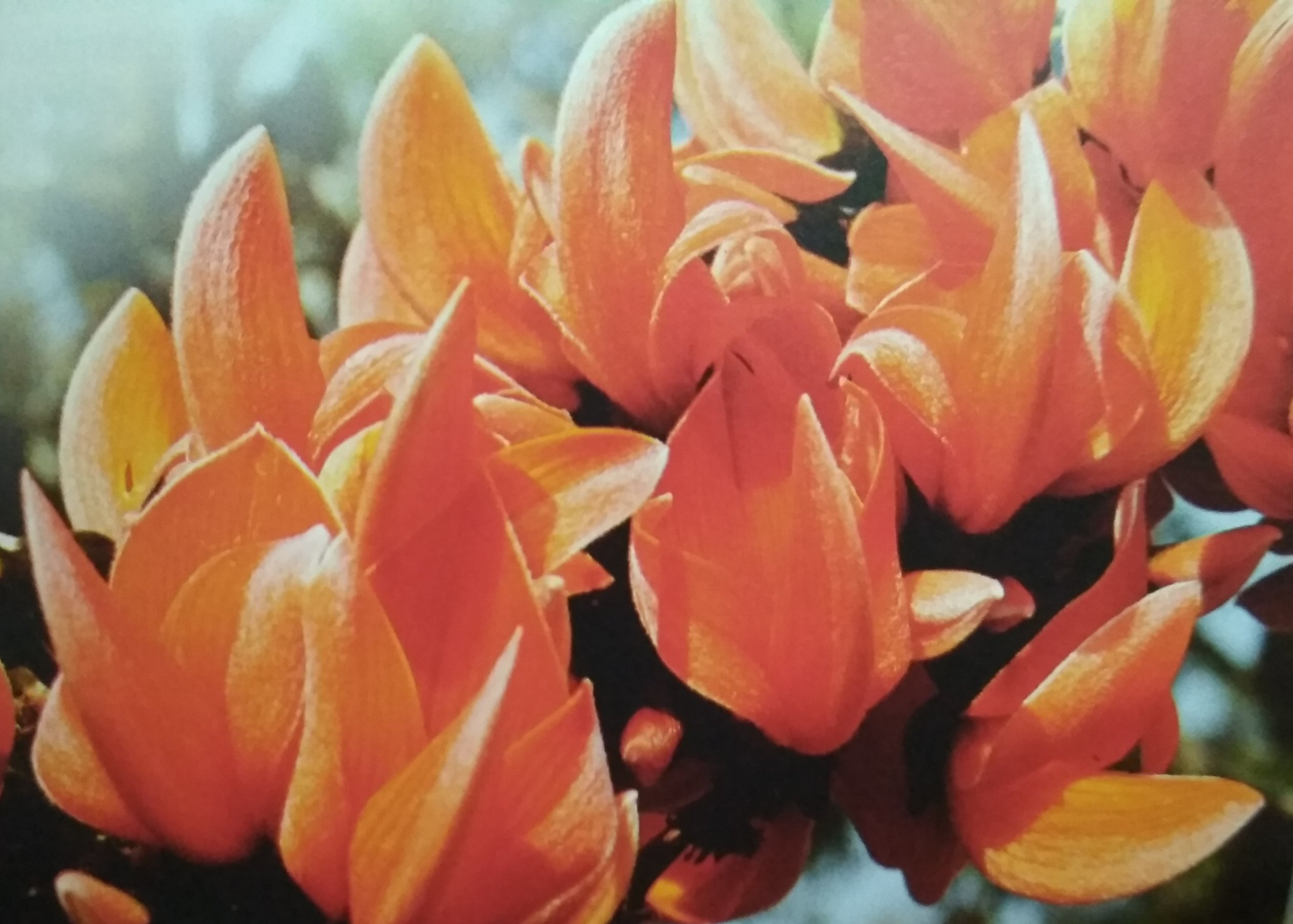
The dye from this flower was also used to dye the orange red coloured robes worn by Buddhist monks.
Identifying the Palash
The tree is of medium size, and is often short and crooked with a widespread canopy. Its most outstanding feature is its bright orange flowers found in clusters on its branches. The flower has a unique shape which is not radially symmetrical, unlike most other flowers. It has one broad petal and two narrow wings on either side that look like claws.
However, when the tree is not flowering, it can be identified with the help of its compound leaves comprising three large leaflets on a common stalk. Other trees also have this same leaf pattern, so this is by no means a unique feature. It is helpful to identify the tree nevertheless.
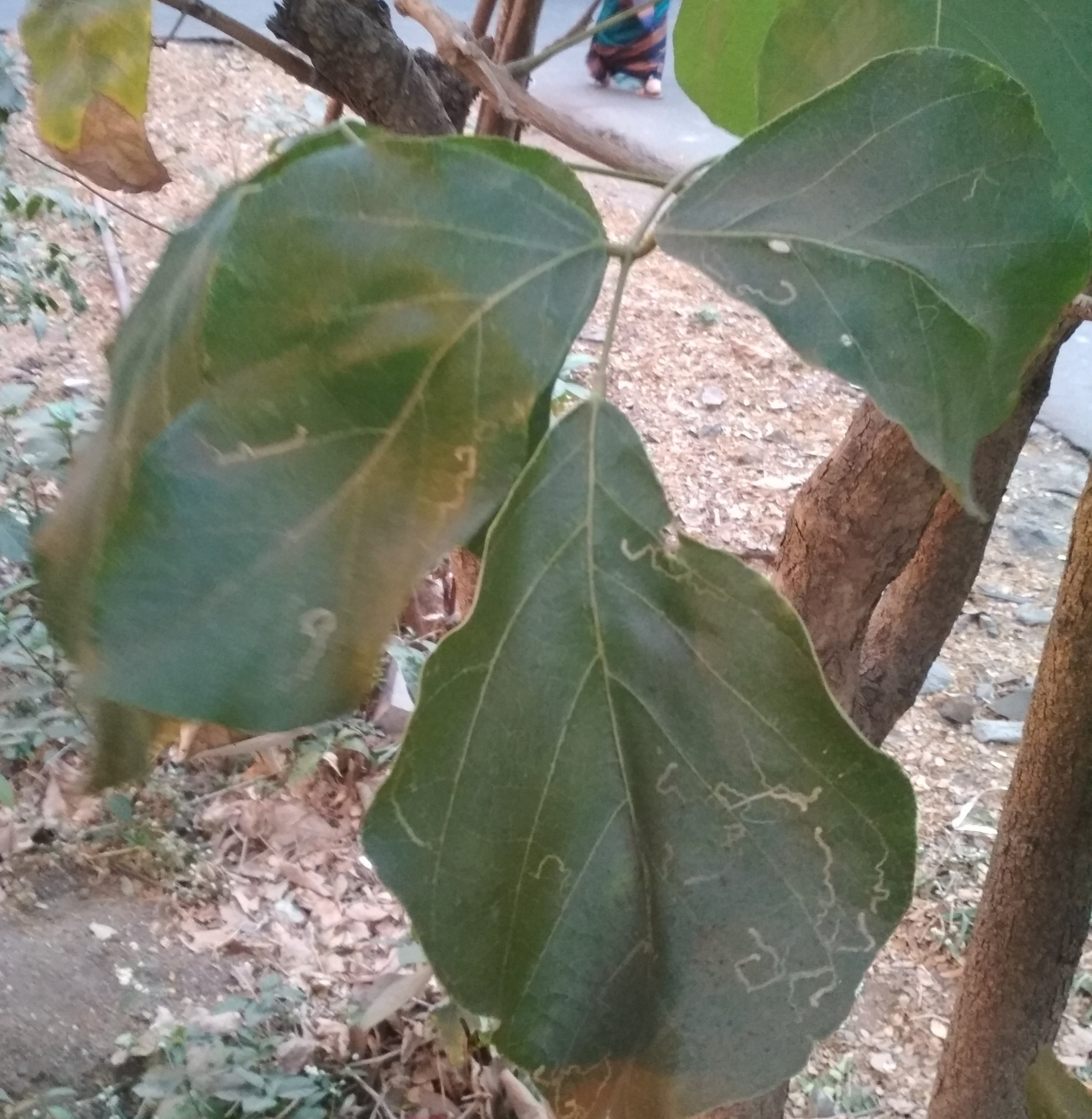
Symbollism
These three leaflets bundled together are identified as Brahma, Vishnu and Shiva and hence the Palash is considered symbolic of the Hindu Trinity. (Another tree that also has foliate leaves and is given the same honour is the Bilwa. Click here to know more about it and the story about why leaves of the Bilwa tree are offered to Lord Shiva)
The red flowers of the Palash are also said to be offered to Goddess Kali. The Palash is also believed to be the dwelling place of Gandharvas and apsaras.
Uses of the Palash
The Palash, like all other trees, acts as an air conditioner by releasing huge quantities of water through transpiration. That cools the air around it. It is due to these properties of trees that one finds that a heavily wooded area is much cooler than a place which is barren.
The leaves of the Palash are stitched together and used as umbrellas in rural areas. They are also used to make cups and plates. Some tribes make ropes out of its roots. The fibre of his inner bark is used to make boats.
The Palash is also the host of the lac insect, which secretes a substance tapped for the shellac industry. The varnish is used to make bangles, glue and other material. The famous incident in the Mahabharata where the Pandavas are trapped in a house of lac – is made from this substance.
The wood of this tree was used in various rituals.
Palash in literature
Naturally a tree as beautiful as a Palash could not have escaped the attention of writers and musicians. Kalidasa, one of India’s greatest writers, has described in his Ritusamhara, written in the 4th century A.D., how jungles of the Palash resemble a blazing fire and make the Earth look like a newly-wed bride with red garments. Amir Khusrau has compared the flowers of the tree to a lion’s claw stained with blood.
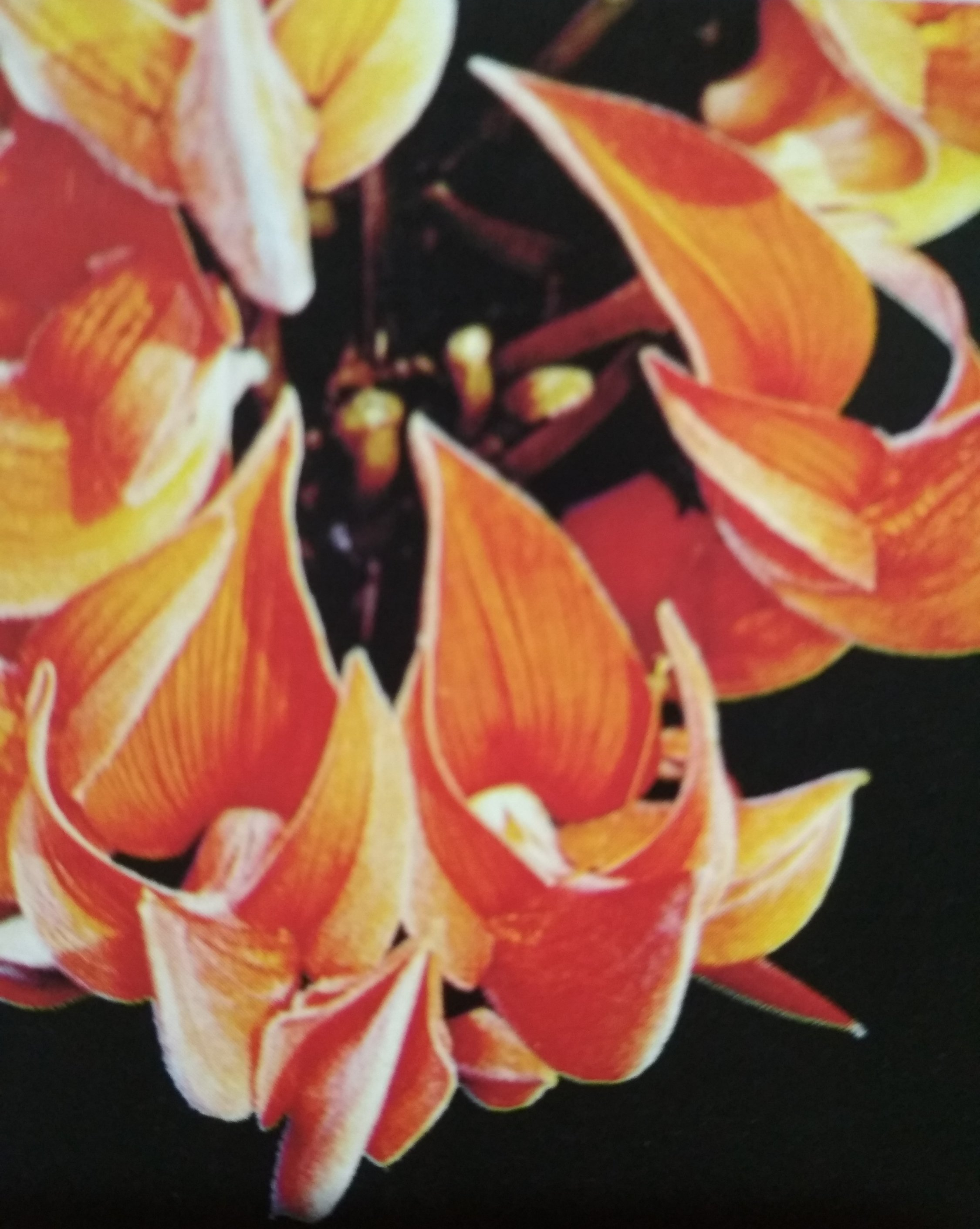
The Palash appears in our Epics, the Ramayana and the Mahabharata. The Ramayana of course has references to several forests in the route that Ram takes during his period of exile. Valmiki describes these forests in great detail by naming several trees found in the jungles. The Palash is one of the many trees that are so mentioned.
As a writer, I have always found great similes and metaphors in nature to make my writing more visual. Encourage your children to observe colours, fragrances, seasons and use their observations to create their own similes and metaphors. For instance, the flowers of the Palash bear a unique shape. While most flowers are radially symmetrical, the Palash is not. Its shape reminded ancient people of the parrot. Hence the Sanskrit name for the Palash is kimsukha – which means like a parrot.
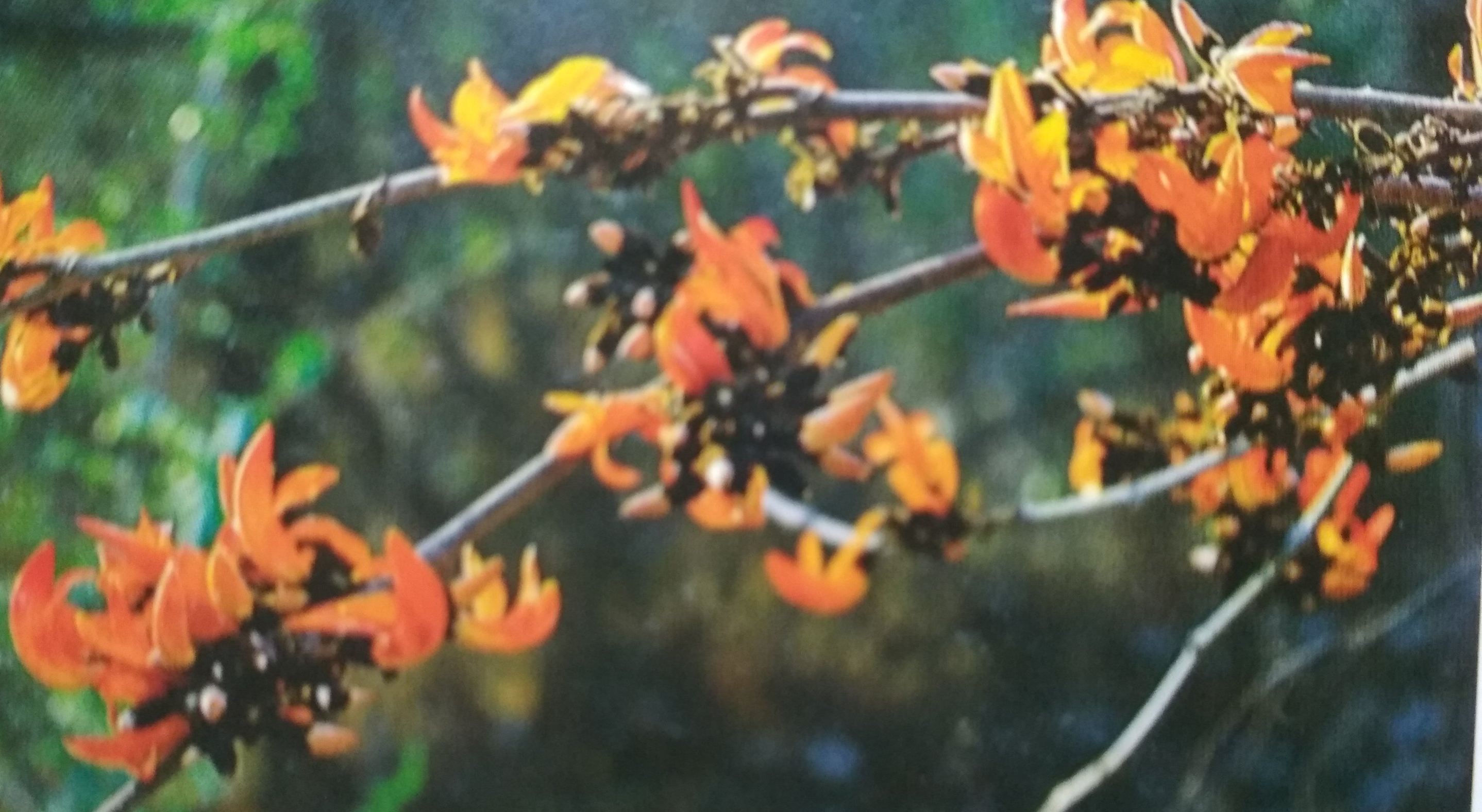
Coming up next week, a beautiful story about the Palash tree – one of my absolute favourites. I am not too fond of didactic and moralistic tales like the Aesop’s fables or the Panchatantra. But believe me, this one is something special. It’s the Indian version of the Elephant and the Five Blind men.
Sign up for the Travel Tale Times, a monthly doze of posts from the site, to stay tuned and updated!
More Tree Stories
- The Special Ber Tree of Amritsar
- Why Shiva is worshipped with leaves of the Bilwa Tree
- They Died to Save Trees
More Festival Stories
- Raksha Bandhan and a River of Tears
- The Story of Onam
- Christmas and the Plum Cake
- Dussera and Ayudha Puja
- Navratri with a Difference
More Stories about Colour


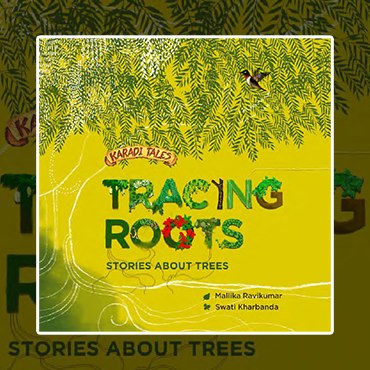
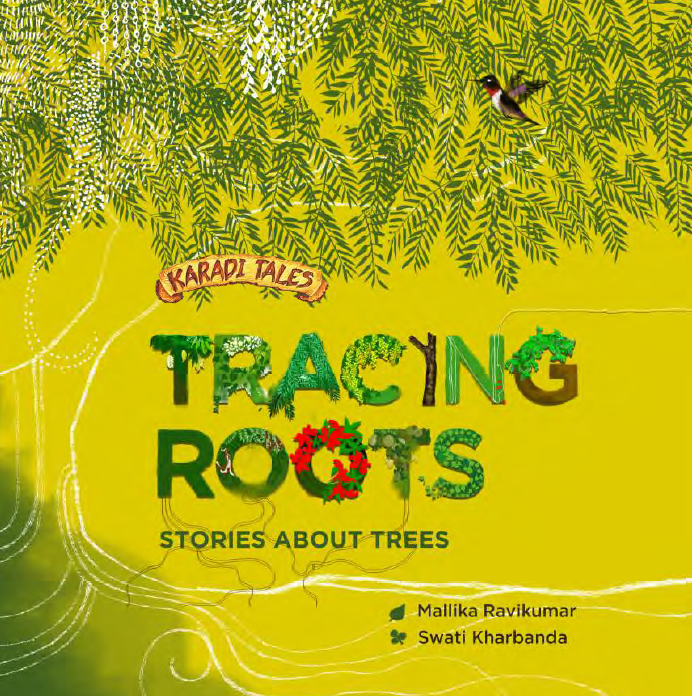

sojournwithsan
March 16, 2019 - 11:54 pm ·Very interesting and beautifully collated. Palash to Plassey- that was something new I learnt!
Mallika Ravikumar
March 16, 2019 - 6:44 pm ·Thank you 🙂
chapter18
March 17, 2019 - 7:48 am ·Nice take on the natural colours of Holi. I have tried to capture the spirit and essence of Holi festival here.
https://chapter18.wordpress.com/2010/02/21/the-wellspring-of-joy/
Ramanjit Garewal
March 17, 2019 - 10:19 am ·Dear Mallika…?
As the flaming Palash flowers…
With their vivid colour…
Set the jungle aflame…
So the beautiful stories of you…
With their lovely colours…
Set the imagination aflame…
Keep it up…
Hugs…
Love…
?
Mallika Ravikumar
March 17, 2019 - 4:54 am ·Thank you. Feedback from readers is the greatest inspiration. Thank you so much. 🙂
Melody
March 17, 2019 - 10:36 am ·A wonderful read, dear Mallika. A great resource for those who work with kids. Thank you for your efforts.
Mallika Ravikumar
March 17, 2019 - 5:23 am ·Thank you Melody for your appreciation and for writing in 🙂
emosassygirl
March 18, 2019 - 11:25 pm ·Keep the good work ??
Also I recently updated my new blog post which talks all about holi.. so please visit ??
https://emosassygirl.wordpress.com/2019/03/17/lets-play-holi/
Mallika Ravikumar
March 18, 2019 - 6:04 pm ·Thanks. Will check it out. 🙂
sunniesmybunnies
March 20, 2019 - 4:36 am ·Happy holi , do find time to read my post on holi here https://sunniesmybunnies.wordpress.com/2018/03/02/6-things-you-should-know-about-holi-the-festival-of-colours/
saverango
March 21, 2019 - 2:15 am ·Wish you a very happy and Colorful HOLI!!
Krati Agarwal
March 21, 2019 - 5:21 am ·Happy holi…..know about other festivals of India-
https://boldblushblog.com/2018/10/04/popular-indian-festivals/